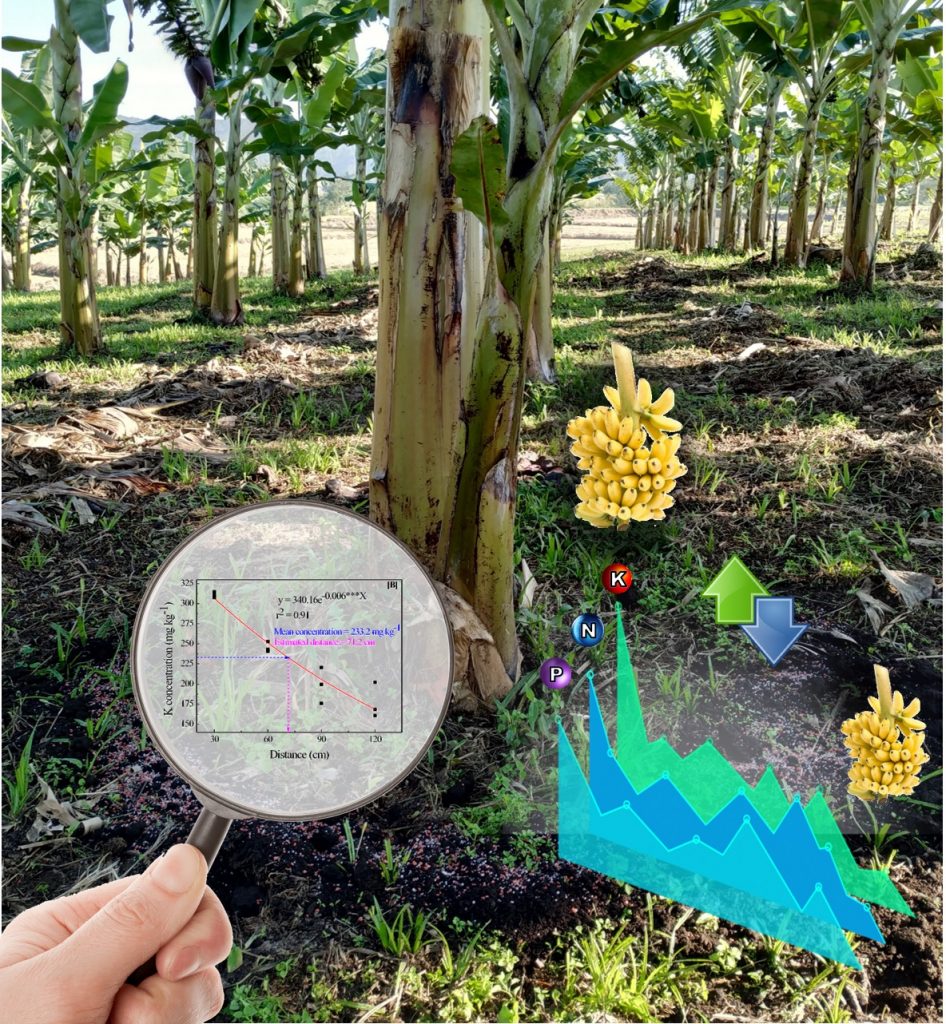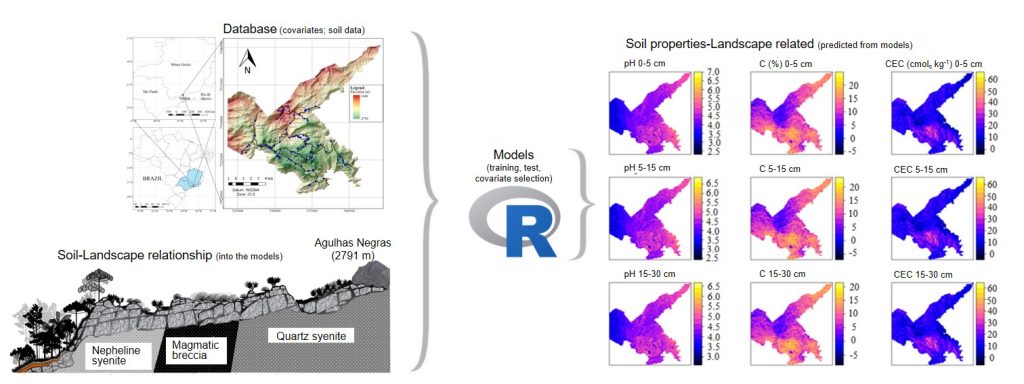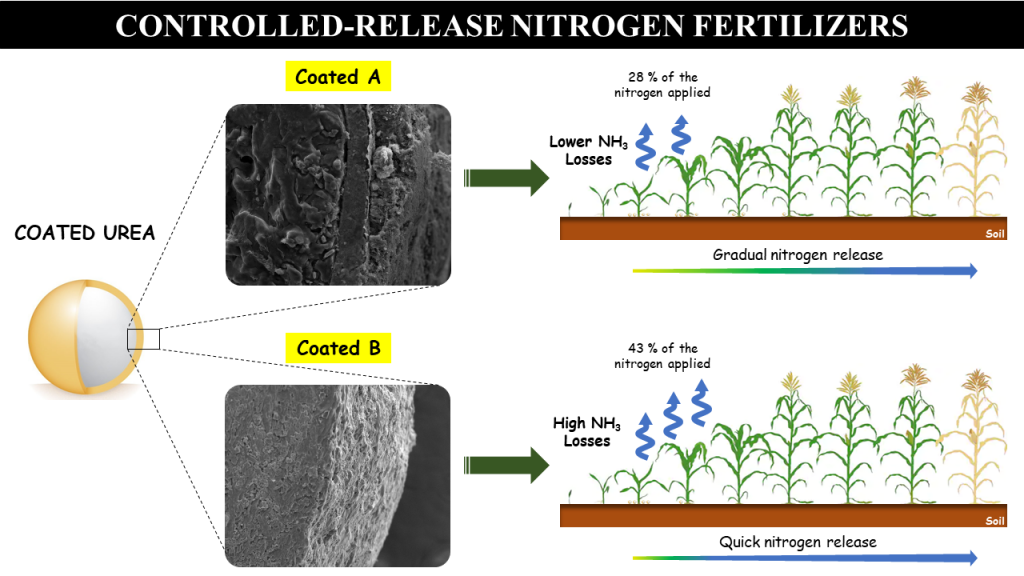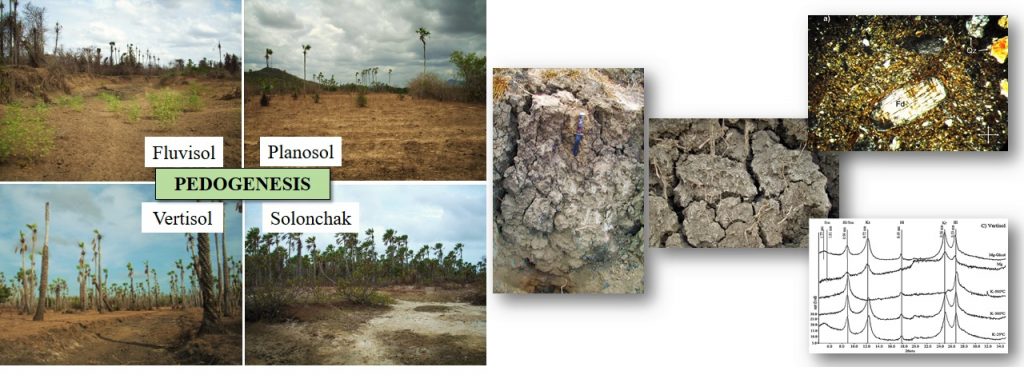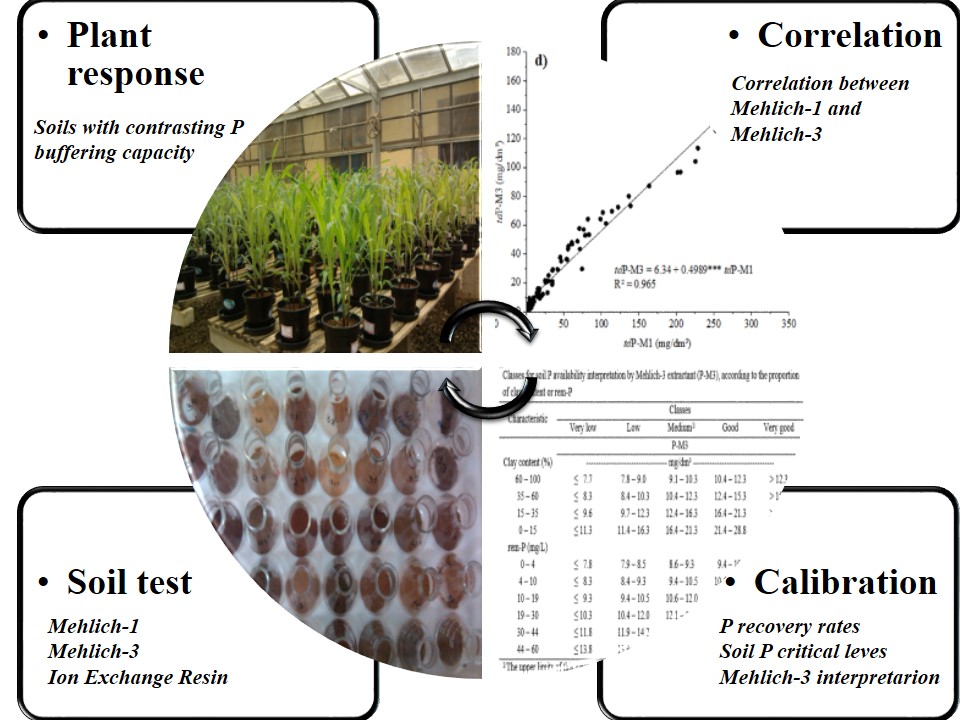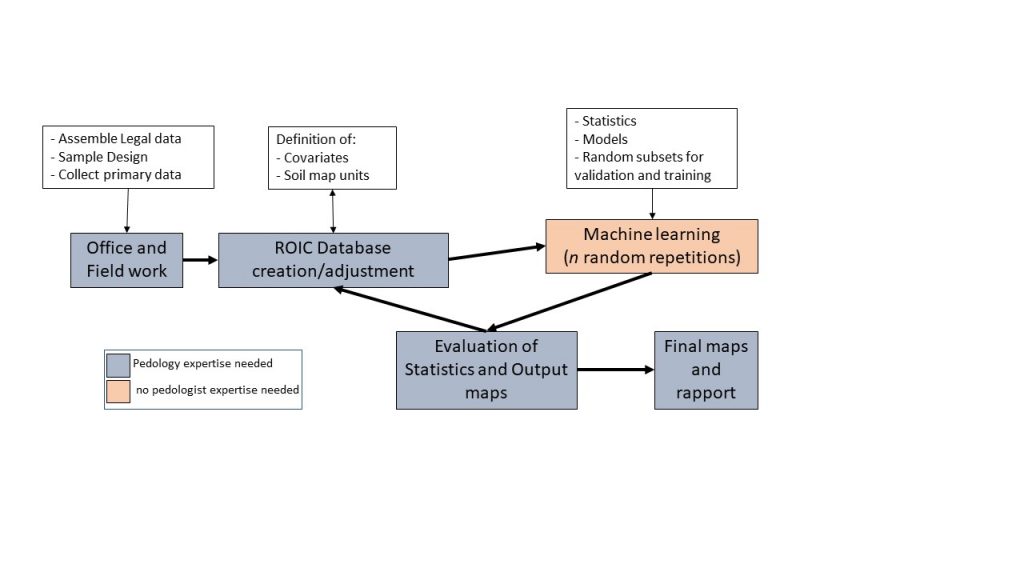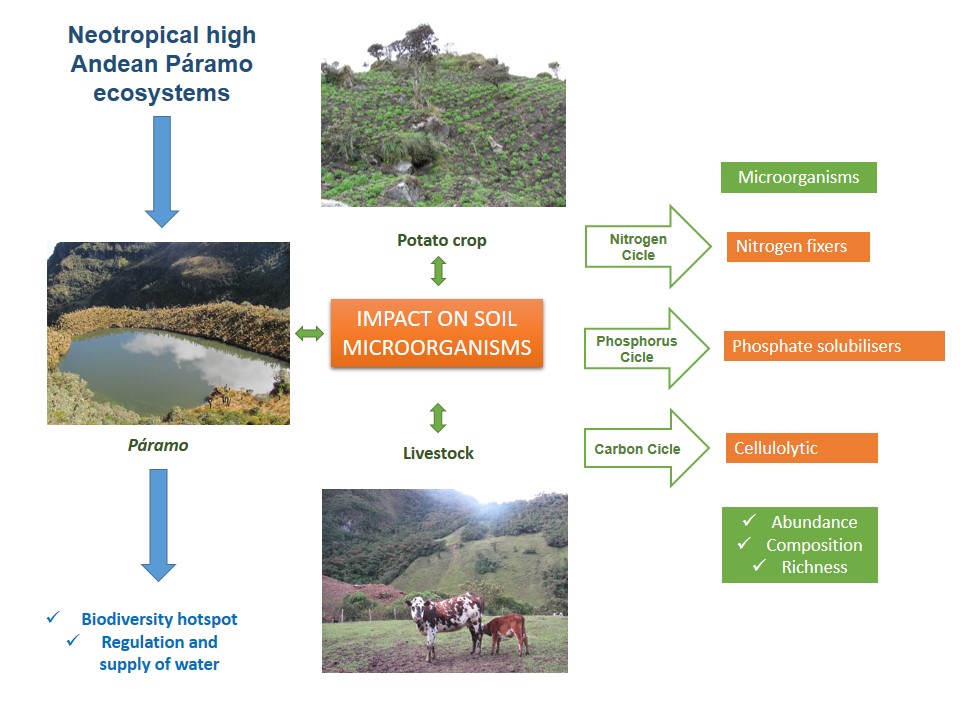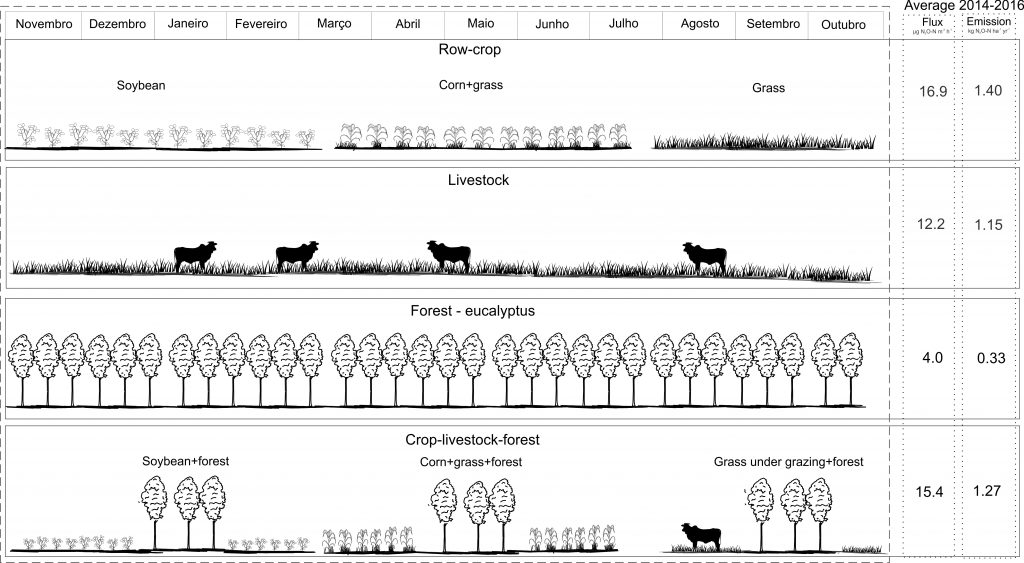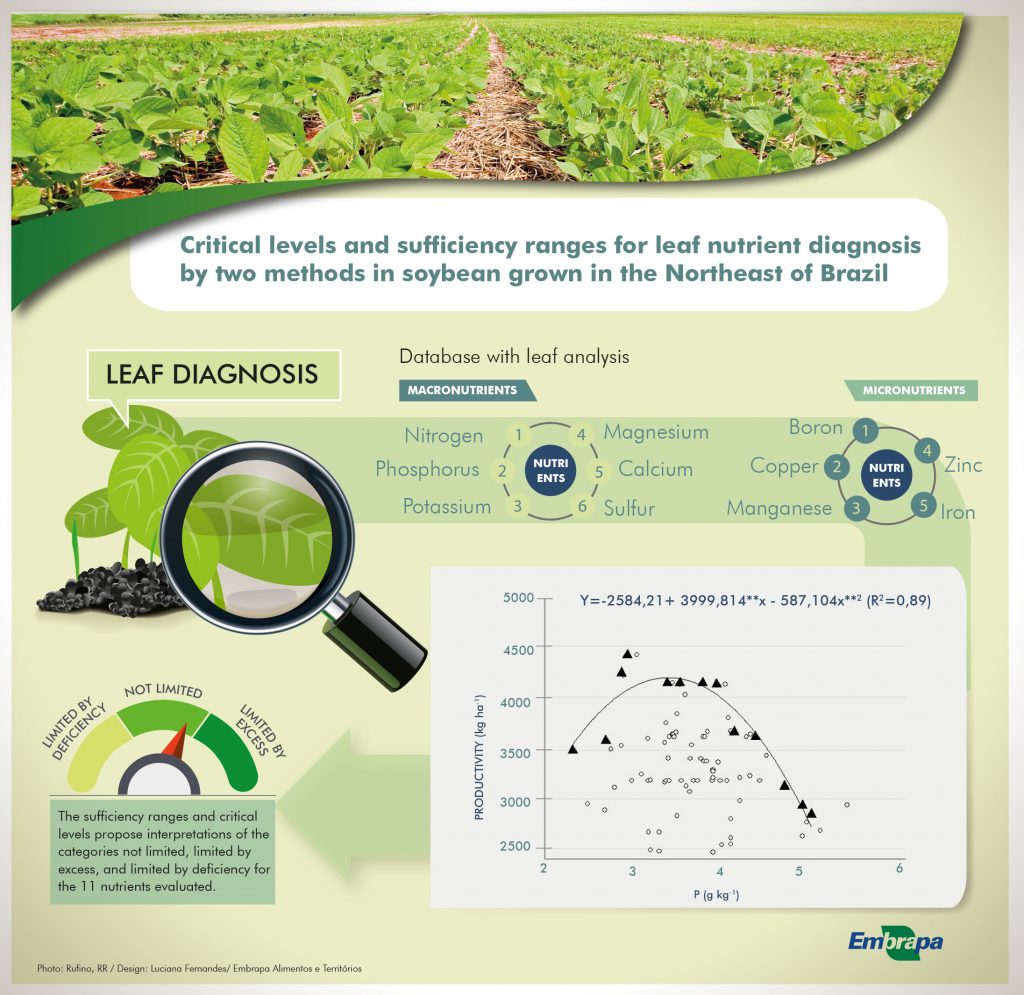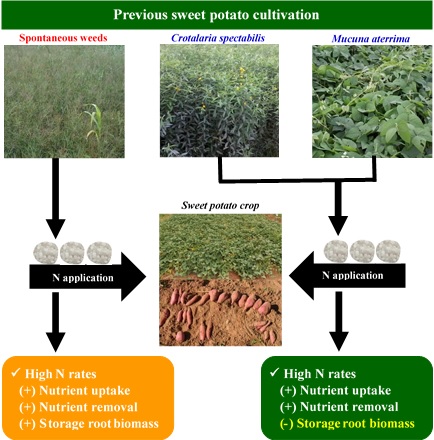Volume 44, 2020
Banana crop nutrition: insights into different nutrient sources and soil fertilizer application strategies
03/Apr/2020
ABSTRACT Considerable attention has been given to the development of new nutritional management strategies that can contribute to banana production be overestimated. The present study was motivated by the possibility that fertilizer application in front of the daughter plant might be more effective than application to the total banana production area. This study aimed to determine the most suitable site for soil collection to evaluate the chemical properties when fertilizer is applied in front of the daughter plant; to evaluate […]
Mapping soil properties in a poorly-accessible area
03/Feb/2020
ABSTRACT Soil maps are important to evaluate soil functions and support decision-making process, particularly for soil properties such as pH, carbon content (C), and cation exchange capacity (CEC), but the spatial resolution and soil depth should meet the needs of users. On another hand, the efficiency of statistical models to create soil maps, with an acceptable level of accuracy, often require a large number of samples with an appropriate distribution across the area of interest. However, accessibility for sampling can […]
Controlled-release nitrogen fertilizers: characterization, ammonia volatilization, and effects on second-season corn
14/May/2020
ABSTRACT The development of new fertilizer technologies to reduce nitrogen (N) losses from an agricultural system and to increase nitrogen use efficiency (NUE) is a global research objective. Controlled-release nitrogen fertilizers have shown great potential for reducing N losses and synchronizing N release according to crop demand, thereby improving the NUE. The objective of this study was to characterize controlled-release nitrogen fertilizers and compare them with conventional nitrogen sources in terms of N release, N loss via NH3 volatilization, and […]
Alluvial soil formation in the plains of northeastern Brazil
23/Oct/2020
ABSTRACT Soils in alluvial plains of the lower course of the Acaraú River, Ceará State, Brazil, are weakly developed and have a complex distribution in the landscape. This study reports the pedogenic characterization of such soils in an effort to understand their formation. Soil pits were opened in four representative sites, profile morphology was described, and soil samples were collected for chemical, physical, mineralogical, and micromorphological analyses. All profiles had weak pedogenic development, as inferred from their morphological characteristics, lack […]
Interpretation of soil phosphorus availability by Mehlich-3 in soils with contrasting phosphorus buffering capacity
02/Apr/2020
ABSTRACT Increasingly rational use of phosphate fertilizers by agriculture is important, especially in Brazil, due to its importance for global food security and its high dependence on phosphate fertilizers for crop production. Thus, correlation and calibration researches with soil available phosphorus (P) extractants to improve the recommendation and the use of P are extremely important. Our objectives were (i) to determine soil P recovery rates and critical levels by the extractants Mehlich-1 (M1), Mehlich-3 (M3), and Ion Exchange Resin (RTI); […]
Sample design effects on soil unit prediction with machine: randomness, uncertainty, and majority map
07/Aug/2020
ABSTRACT Notwithstanding the importance of soil surveys, advances in digital soil mapping have mainly focused on mapping soil attributes or properties rather than developing digital maps of soil units or soil classes. The purpose of this research was to develop digital soil unit maps based on primary soil data collection in areas without previously collected soil information. The covariate variability, the random effect across the data subset and the map outputs were the focuses of this study. We used five […]
Potato cultivation and livestock effects on microorganism functional groups in soils from the neotropical high Andean Páramo
02/Apr/2020
ABSTRACT Páramo ecosystems are of great importance because they are considered hotspots within the Tropical Andes. They are also very important for their role as producers and regulators of water processes in the Neotropic. However, the human occupation of the Colombian Páramos has generated conflict between environmental benefits and productive land uses, specifically the potato cultivation and livestock. To assess possible changes associated with potato cultivation (Solanum tuberosum L.) and livestock on the microbial communities of Páramo soils, the objective […]
Nitrous oxide emissions from a tropical Oxisol under monocultures and an integrated system in the Southern Amazon – Brazil
24/Apr/2020
ABSTRACT Although agriculture and livestock systems represent important sources of N2O from the soil, they may also aid in emissions mitigation, mainly when integrated systems are taken into account, such as crop-livestock-forest, for food production. This work assessed the soil N2O emissions from a tropical Oxisol under row-crop, livestock, forest monocultures, and an integrated crop-livestock-forest system in the Southern Amazon – Brazil. Soil N2O emissions were measured using static chambers from November 2014 to October 2016 in four soil use […]
Critical levels and sufficiency ranges for leaf nutrient diagnosis by two methods in soybean grown in the Northeast of Brazil
20/Jul/2020
ABSTRACT Establishing sufficiency ranges and critical levels of nutrients are important for a correct evaluation of plant nutrition through leaf diagnosis. This study aimed to propose critical levels and sufficiency ranges of macro and micronutrients based on leaf diagnosis of soybean plants. The database used was generated from 86 samples of the third trifoliate leaf without petiole, collected during the flowering stage from soybean plants of the main cultivars used in the states of Piauí and Maranhão, Northeast region of […]
Nutrient uptake and removal by sweet potato fertilized with green manure and nitrogen on sandy soil
26/May/2020
ABSTRACT Sweet potato crops take up large amounts of nutrients, especially nitrogen. In low-fertility soils, the addition of nitrogen (N) increases the sweet potato yield. Green manure may be an alternative method for improving soil quality and supplying nutrients to this crop. This study aimed to evaluate the plant’s nutritional status and the amount of nutrients taken up and removed by sweet potato plants subjected to green manure and mineral N fertilization. The experiment was carried out in the field […]

